... those LIRs that closed. The RIPE NCC now has over 8,000 members. But how many members have closed in the meantime and why?
Since the establishment of the RIPE NCC, 5,000 Local Internet Registries (LIRs) have closed (see: From 80 to 8,000 - The Growth of the RIPE NCC ). We wanted to find out why. Many of them were probably victims of the burst of the dotcom bubble. But how many? And which countries were mostly affected? How many closures were the results of mergers? We’ve got answers below.
1. How many organisations never finialised the process?
To start with, it is interesting to note, that out of these 5,000 now closed LIRs, roughly 2,000 never actually finalised the process and never signed a contract with the RIPE NCC. In the image below, you can see that a big chunk of these organisations were located in Russia and the UK. But there are also countries that normally don't show up among the top 5 like Iran, Turkey and the Ukraine.

Figure 1: LIRs that never finished the application process (per country)
2. How many LIRs that opened during the dotcom bubble have since closed?
If we define the dotcom bubble as the three years between 1999 and 2002, then 978 of dotcom LIRs have since closed. This accounts for 36% of all closed LIRs. The reason for closure could be anything from not paying invoices, stopping their business, renaming, merging or being taken over (see some more details on reasons for closure below). As you can see in the image below, around 50% of those LIRs were located in the UK, Germany, Russia, Italy and the Netherlands.
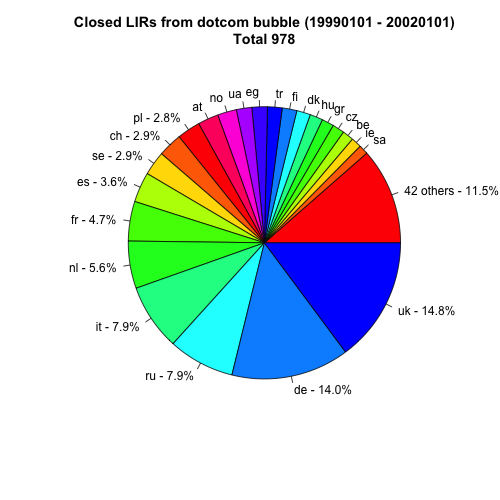
Figure 2: LIRs that opened during the dotcom bubble and were since closed (per country)
3. What are the reasons for closing an LIR?
It is difficult to reliably determine the reasons why LIRs stop doing business. To get an idea, we looked at a sample of all LIRs that opened in the UK during the dotcom bubble and that have since closed. This might not be a representative sample, but it adds up to 15% of all closed LIRs that opened during the dotcom bubble years. It at least gives an indication of the various reasons why LIRs closed.
In the image below you can see that almost 50% of all closures were caused by non-payment. Nearly one-third of the LIRs that closed, merged with or were taken over by other LIRs. Around 20% of the LIRs closed for other reasons, often because they decided to stop their business.
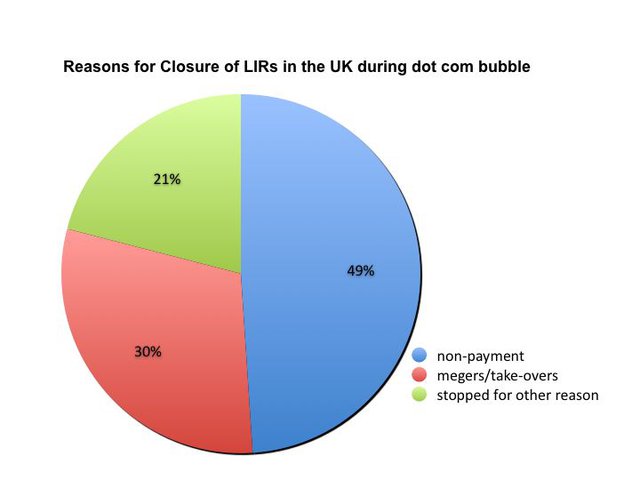
Figure 3: Reasons for closure of LIRs that opened in the UK during dotcom bubble
4. How long were closed LIRs operational?
We also looked at the time LIRs were operational before they closed. In the image below, you can see that the majority of LIRs were open for less than five years. But there are also a number of LIRs that were in operation for over 15 years. Some of them were probably taken over or merged into other organisations and might still be around in some form. The average time that a now-closed LIR was a member of the RIPE NCC is 4.3 years.
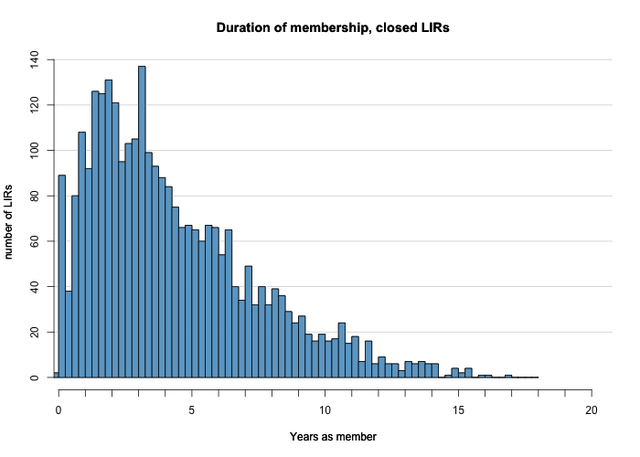
We also looked at those LIRs that opened during the dotcom bubble (see Figure 5). Their average life-span was very similar: 4.6 years. Also, the distribution of "years-as-member" for closed dotcom LIRs (Figure 5) looks similar to the one of all closed LIRs (Figure 4).
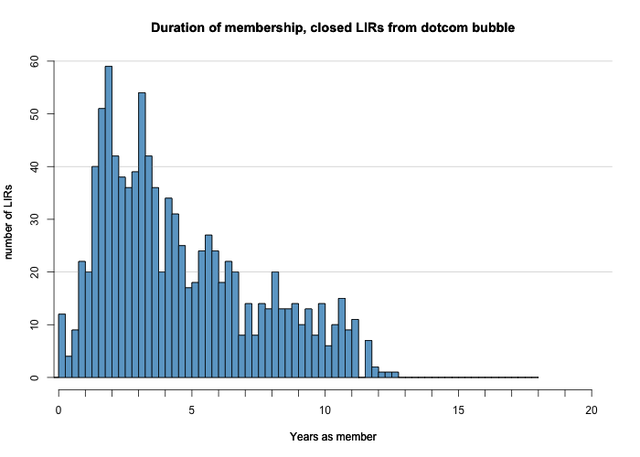
That means that the dotcom generation does not behave that different from others; we just saw many more signing up during those days.

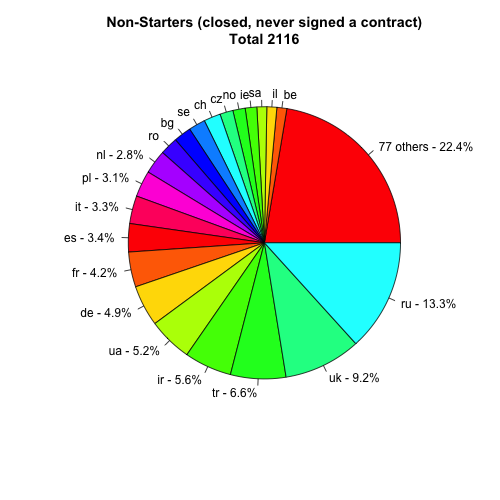



Comments 2
The comments section is closed for articles published more than a year ago. If you'd like to inform us of any issues, please contact us.
Raza Rizvi •
I'd have said the bubble was Autumn 1998 to Mid-2001, in the UK at least. I wonder if that slightly alters the numbers? Interesting report though!
Rene Wilhelm •
Hi Raza, Thanks for your feedback. We picked the period 1999-2002 because that's where statistics show the bubble in RIPE NCC membership growth rates. As you can see in figure 1 of https://labs.ripe.net/Members/wilhelm/members-and-number-resources-1-year-later the second half of 2001 still had a solid number of LIRs signing up. Redefining the dotcom bubble as lasting from 1-Oct-1998 to 1-Jul-2001 doesn't alter the numbers much. The shorter interval makes for a smaller total number of LIRs, but in both cases we see 44% of the dotcoms have closed now. The same 5 countries account for half of the closed LIRs, only Russia's share drops from 8% to 6%. The distribution of lifetime for the new interval is also very similar to what is shown in figure 5 above. The average goes up by about a month, from 4.6 to 4.7 years as member of the RIPE NCC. Regards, Rene